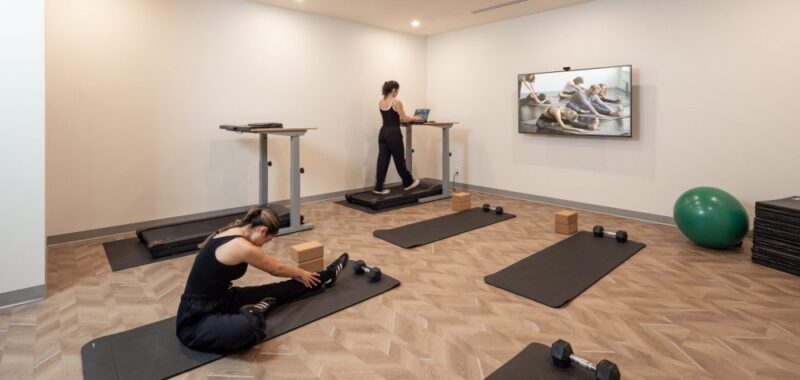Robin Rosebrugh, Director of Workplace Strategy & Research at Aura, details how the office can take a page from the Gym’s playbook.
As workplaces struggle to attract employees back, trendy gyms and wellness clubs are experiencing a resurgence, luring people away from their home Peloton workouts. They’re not just surviving, but transforming into must-visit destinations.
These spaces have reinvented themselves with a mix of hybrid options and innovative experiences, offering something so compelling that people willingly leave the comfort of their homes to engage. From thoughtfully designed environments that encourage connection to curated amenities that make a visit feel like self-care, these clubs have cracked the code on what motivates people to show up in person. If offices can tap into the same principles of community, purpose, and value, they just might become places employees are excited to return to, not out of obligation, but by choice. Could their strategies hold the key for workplaces to do the same?
More Than a Workout
Gyms have stopped functioning as “just gyms.” Instead, they’re rebranding as “wellness clubs” or “social clubs,” shifting the focus from exercise to lifestyle. This represents a strategic pivot: going to the gym now involves more than just fitness; it also entails engaging in a physical space with other people.
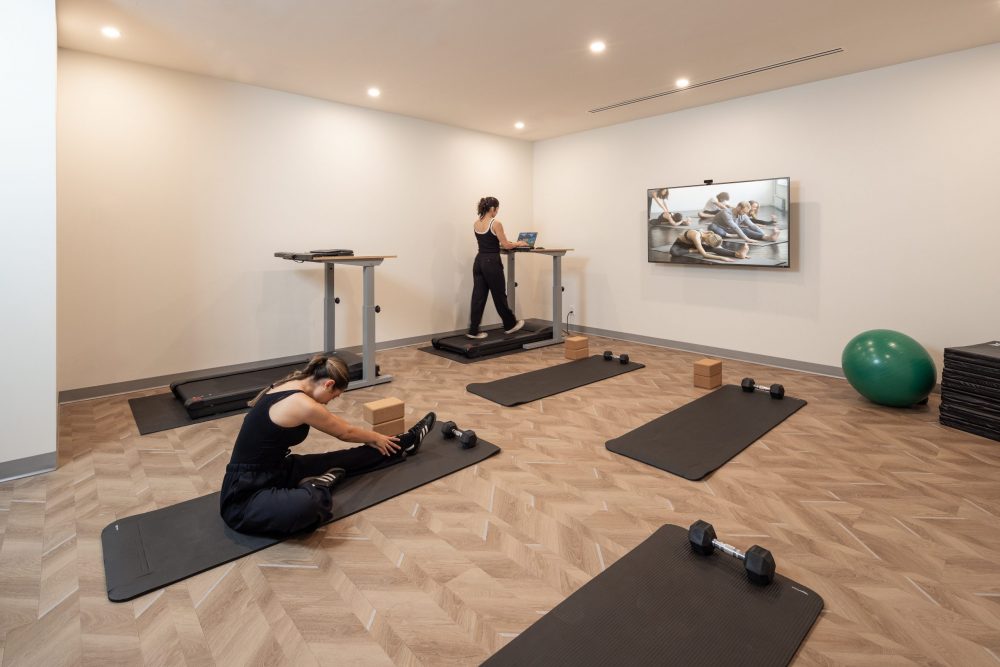
Similarly, workplaces can follow suit by redefining themselves not as “offices” but as innovation hubs, collaboration commons, or cultural spaces. This kind of branding reframes the value of showing up, emphasizing connection and creativity over tasks that can be completed anywhere. As HEIMAT describes,
it’s about creating ‘a natural setting where members can reimagine what it means to live well.’
Workplaces have an opportunity to use this moment to reinvent what high performance in a shared environment can look and feel like.

The Power of Place
Since 2020, interest in learning about physical and mental health has grown, thanks to the popularity of health podcasts like The Huberman Lab. Gyms have recognized this trend, emphasizing the benefits of exercising alongside others. Sebastian Schoepe summed it up best: “You can work out at home, but you work out differently when you’re with other people. You go that extra breath, you add another five pounds, you go for another 10 minutes on the treadmill—if the environment is right.”
Offices can echo this sentiment by showing how proximity to high-performing colleagues can boost personal performance. Research from Kellogg School backs this up: sitting near a high performer increases your productivity by 15%. The lesson? It’s not just the space, but also the people you share it with.

Building Muscle and Community
Modern gyms thrive because they create spaces where people want to connect. Altea West, in Vancouver captures this beautifully: “Individuals come together through curated spaces and experiences. Whether you’re here for a workout or simply seeking camaraderie, our environment invites you to linger and connect.”
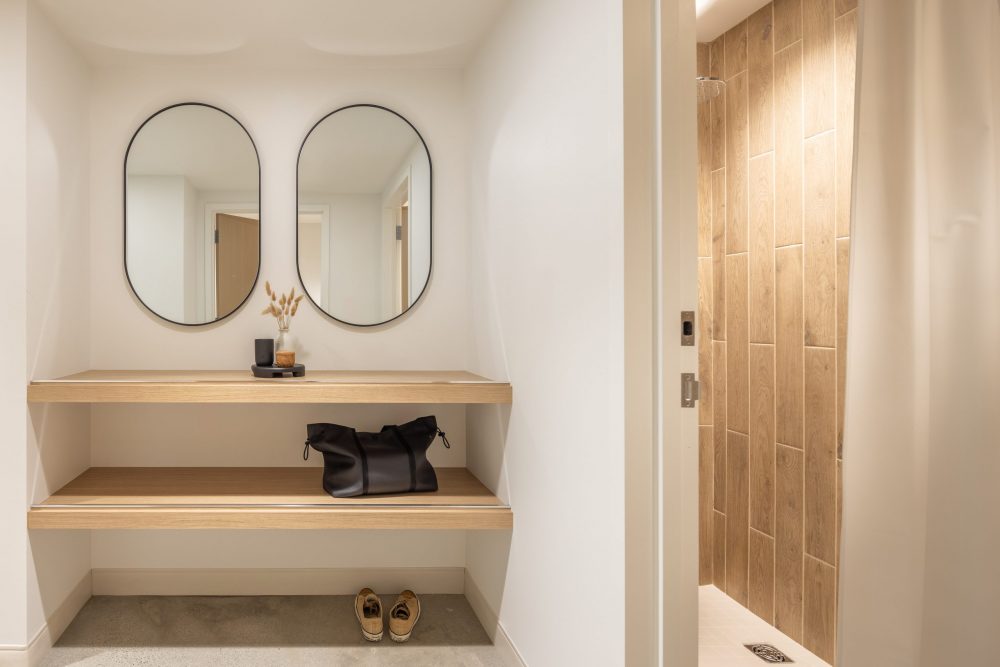
In a society where loneliness is becoming a public health issue, these clubs are leaning into their role as community builders. Workplaces can do the same.
Design matters, but so does intent.
Offices can be spaces that facilitate organic, meaningful interactions, whether through open lounges, hosted events, or even informal shared rituals like morning coffee breaks. Building connection isn’t about forcing collaboration; it’s about creating environments that naturally foster it.
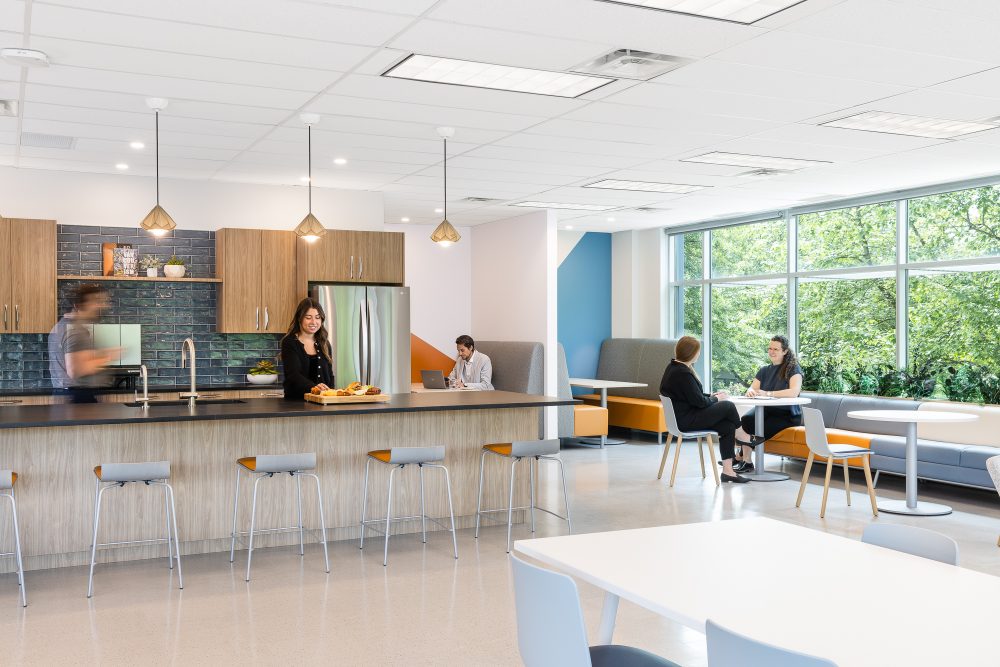
The Holistic Experience
Gyms today offer more than equipment; they provide experiences. They entice people to stay with coworking spaces, saunas, cafes, and even wine bars. These amenities give members reasons to linger and connect, turning gyms into destinations rather than stops on a checklist.
Offices can adopt this mindset by offering wellness rooms, tech-enabled collaboration zones, curated dining spaces, and outdoor terraces. The key is creating a multifunctional environment where employees feel there’s something for them beyond their work tasks. Just like gyms are no longer just for workouts, offices shouldn’t be just for work.
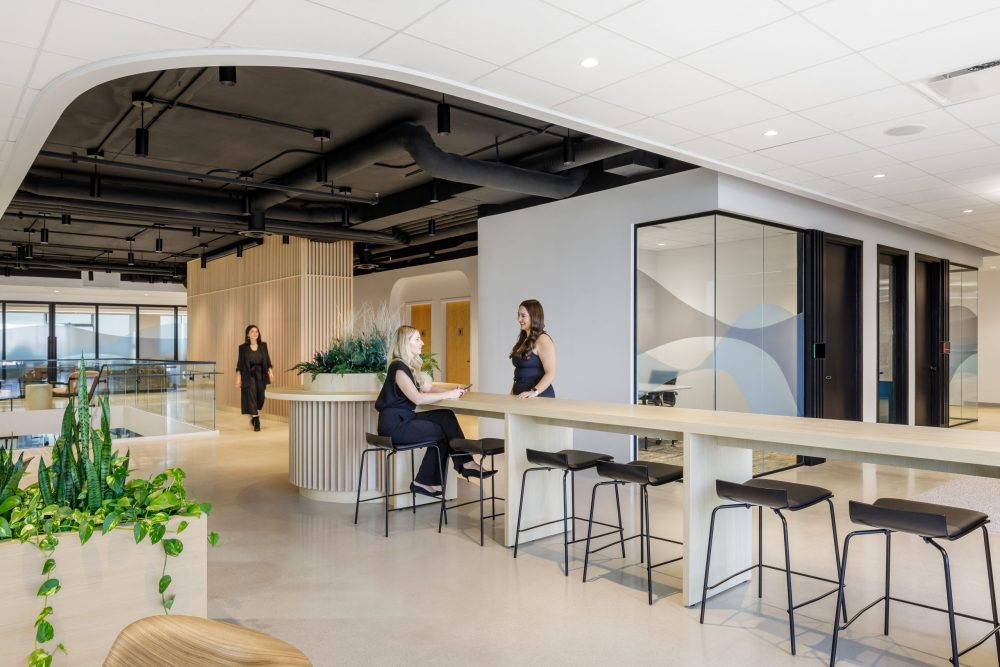
Above All, Autonomy
Gyms respect individuals’ autonomy while still fostering community. You decide when and how often to go, but the magic happens when familiar faces become part of your routine. It’s the shared class or post-workout conversation that creates connections. Offices can follow this model by allowing flexibility in attendance but emphasizing shared rituals, like team lunches or weekly brainstorming sessions, to build a sense of belonging. Autonomy doesn’t mean isolation; it means empowering employees to participate in a way that feels right for them, while fostering the consistency that builds relationships.

The rise of trendy gyms highlights a fundamental truth: people value spaces that foster connection and community. If offices take a cue from these wellness clubs, focusing on connection, creativity, and community, they can reinvent themselves as more than just workplaces. It’s time to shift from a “place to work” to a place people want to be.
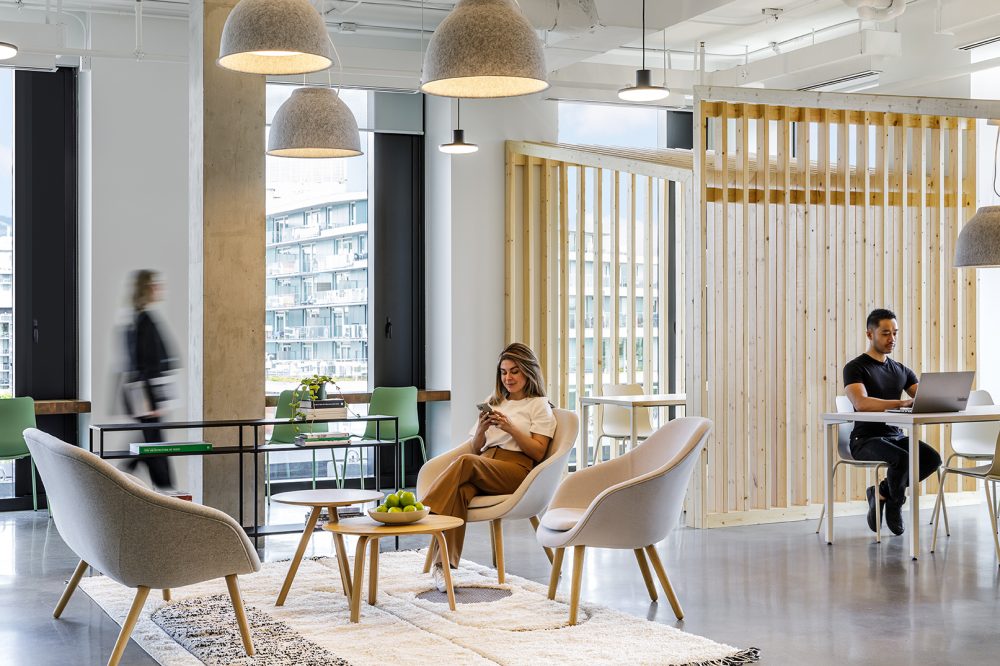
Reimagining the workplace involves more than just design. It’s an opportunity to align organizational objectives with employee experiences, serving as a blueprint for creating spaces that foster productivity, well-being, and culture. Developing a workplace strategy assures decision makers that they are solving the right problems when investing in their space. Place, policies and technology come together with business objectives allowing organizations to unlock the full potential of their teams and redefine what it means to work together.
All photos courtesy of Aura.

